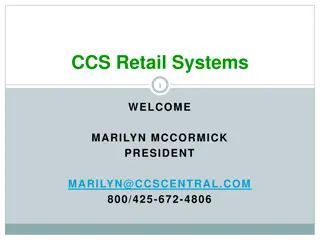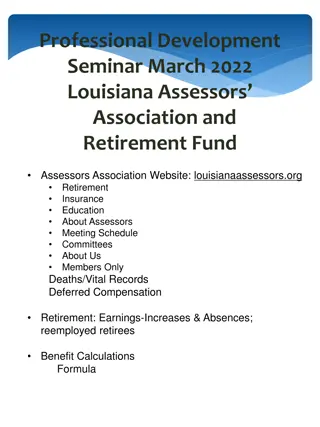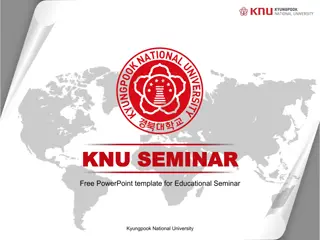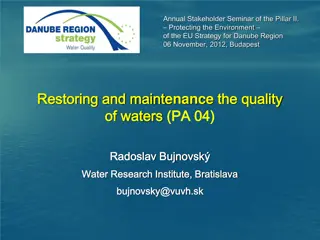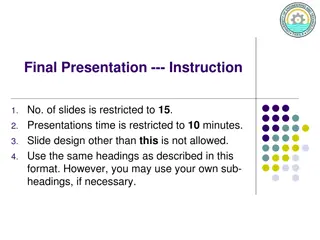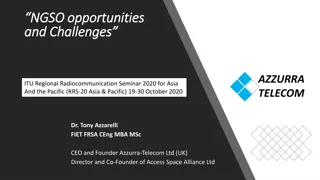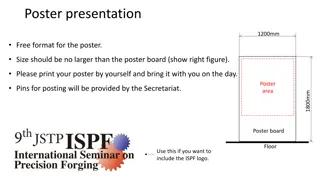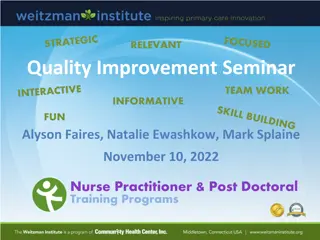
Successful Pre-Apprenticeship Programs Overview
Explore successful pre-apprenticeship programs in New Jersey, including PACE and YTTW initiatives. Learn about key components, best practices, and outcomes discussed by expert panel members. Discover how these programs help align education with labor demands and create pathways to sustainable careers.
Download Presentation

Please find below an Image/Link to download the presentation.
The content on the website is provided AS IS for your information and personal use only. It may not be sold, licensed, or shared on other websites without obtaining consent from the author. If you encounter any issues during the download, it is possible that the publisher has removed the file from their server.
You are allowed to download the files provided on this website for personal or commercial use, subject to the condition that they are used lawfully. All files are the property of their respective owners.
The content on the website is provided AS IS for your information and personal use only. It may not be sold, licensed, or shared on other websites without obtaining consent from the author.
E N D
Presentation Transcript
Partnerships that Work: An Overview of Successful Pre-Apprenticeship Programs
Objective of the Workshop Objective of the Workshop Organizations will discuss the components of a successful pre-apprenticeship program, review best practices and provide an overview of their success to date. The goal is for attendees to take away practical options and solutions to manage and grow quality pre-apprenticeship programs at your institution.
Panel Members Panel Members Dr. Stephanie Harris-Kuiper, Executive Director NJ Healthcare Employers District 1199J Training and Development Fund Dr. Aaron Fichtner, President New Jersey Council of County Colleges Thomas Sommers, Director of Training New Jersey Regional Council of Carpenters
Pre Pre- -Apprenticeship in Career Apprenticeship in Career Education (PACE) Education (PACE) The mission of the PACE program is to better align secondary, post-secondary, adult education and occupational training to meet the labor demands unique to New Jersey and develop career pathways that lead to economically sustainable wages. Pre-Apprenticeship program training leads to one of the following outcomes: 1) Admission into a USDOL Registered Apprenticeship program; 2) Admission into a post- secondary college, or occupation-specific career training; or 3) Employment with a starting wage of not lower than $15 per hour. Highlights of PACE: Highlights of PACE: Training curriculum is developed by each grantee in alignment with partners sponsors and employers; A stipend up to $250 per week to participants of the program can be included in the approved grant budget; Encourages grantees to focus on targeted populations; and A minimum of 25% of the participants completing the program must be placed into a USDOL Registered Apprenticeship program.
Youth Transitions to Work Youth Transitions to Work (YTTW) (YTTW) The purpose of the YTTW program is to provide greater opportunities for high school juniors, seniors, and out-of-school youth (ages 16-24) to facilitate effective transitions to high-skill, high-wage employment in labor demand, apprenticeable occupations, with long term career potential and opportunities for occupational relevant lifelong learning. Highlights of YTTW: Highlights of YTTW: Requires a minimum of 60 hours of occupation-specific training, 20 hours of workforce readiness training and 10 hours of job shadowing experiences; Requires a consortium of partners; At least 80% must complete the training program; and At least 80% must be placed into a USDOL Registered Apprenticeship Program.
Components Components of a Quality Pre Pre- -Apprenticeship Program Apprenticeship Program of a Quality Employer/Industry Involvement Simulated Experience/Hands-on Training Increased Diversity Supportive Services/Mentoring Sustainable Partnerships
Discussion Question #1 What program elements have you found most useful in strengthening a participant s success in a Registered Apprenticeship Program or a job?
Discussion Question #2 What strategies do you utilize to recruit employers? How do you encourage employers to participate in your pre- apprenticeship program?
Discussion Question #3 Please describe your process for sourcing and evaluating reliable candidates. Have you experienced any challenges in that process and if so, how were you able to remedy those challenges?
Discussion Question #4 Please describe how you determined the occupations for your pre- apprenticeship training program. Are there any important steps or best practices you can share?
Discussion Question #5 What are some tips to ensuring future viability of your programs? How do you evaluate overall program performance?
Discussion Question #6 Do you have any other thoughts or suggestions that an organization should consider when starting a pre-apprenticeship program?
NJ Office of Apprenticeship NJ Office of Apprenticeship CONTACT INFORMATION James Manning, Chief, Contracts and Programs Unit James.Manning@dol.nj.gov Phone: 609-633-6438 William Sarboukh, Supervisor William.Sarboukh@dol.nj.gov Phone: 609-984-3501 Lauren Kremper-DiFilippo, Contract Administrator Lauren.Kremper-DiFilippo@dol.nj.gov Phone: 609-292-1467 Tami Novatin, Contract Administrator Tami.Novatin@dol.nj.gov Phone: 609-777-2103







